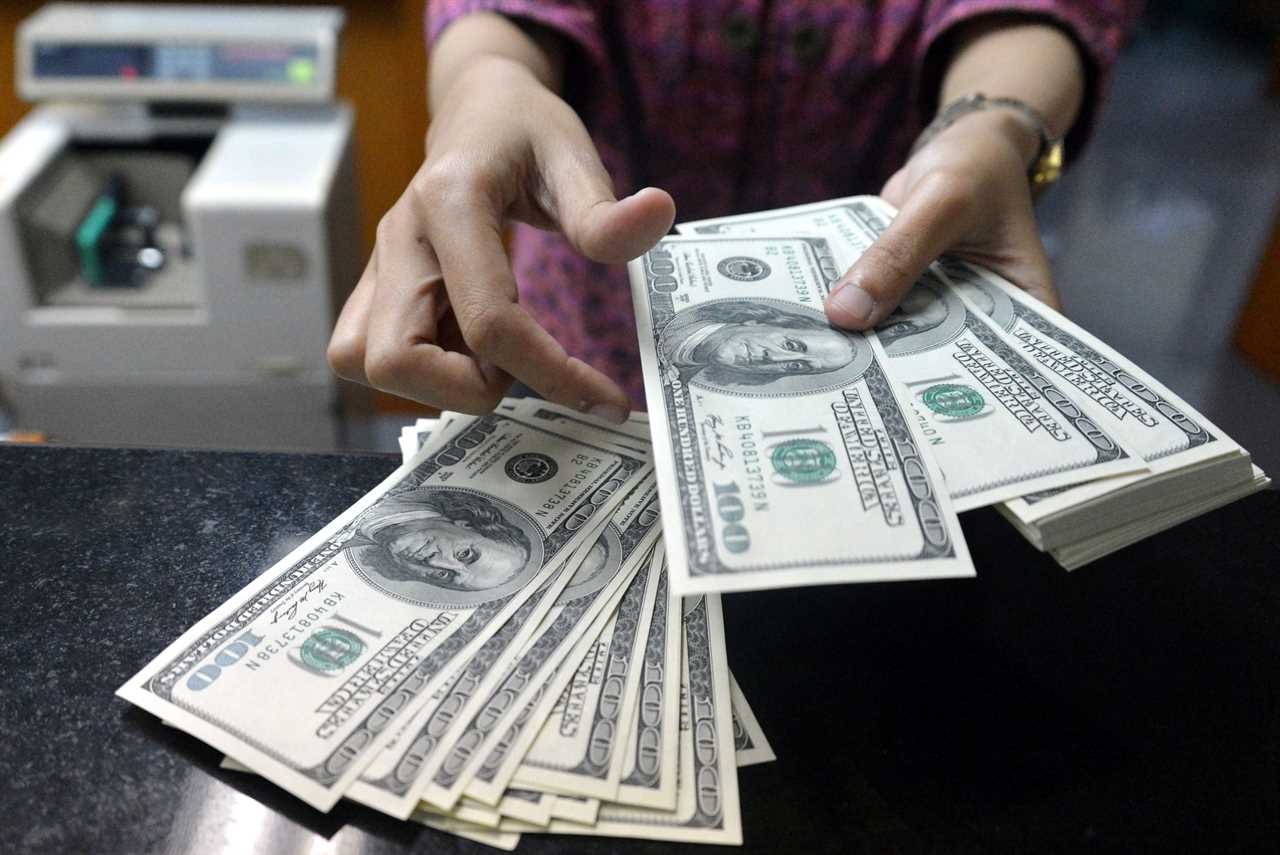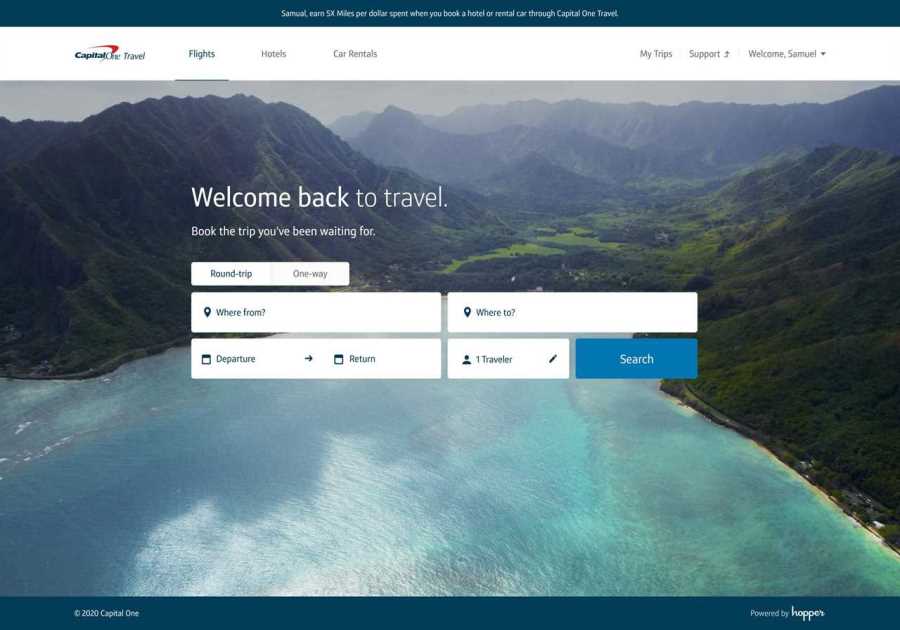HOSTED BY: 1 AIR TRAVEL
Editor’s note: This is a recurring post, regularly updated with new information.
Owning a small business can present lucrative opportunities for maximizing credit card rewards. It can also present unique challenges because much of the information surrounding travel credit cards is focused on personal options rather than those geared toward businesses.
Today, let’s closely examine credit card strategies for small-business owners looking to maximize rewards.
Here are 10 things to consider as you build a strategy to maximize rewards from your business spending.
Look at where your business spends the most

STEVECOLEIMAGES/GETTY
Before any other tip, you need a good understanding of your business’ spending — not just how much you spend but where you spend it.
Start by looking at your business’ spending and the relevant Merchant Category Codes to see where to maximize spending to earn more points on every dollar. Then, check the earnings from the credit card you’re currently using for business expenses; can another card do better?
If your business spends a lot on shipping products, you want a card that earns extra points here. If you own a restaurant and consistently make grocery purchases, chances are that the best card for your business will be different.
After analyzing where you spend the most, look for cards that earn bonus points or miles in these categories. You could even consider applying for the best card for each of your regular spending categories, as that will allow you to maximize all of your transactions.
Luckily, some cards adapt to your business’ spending habits, as well.
For example, the American Express® Business Gold Card offers 4 points per dollar in the two categories where your business spends the most each billing cycle — up to $150,000 in combined spending per year, 3 points per dollar on flights and prepaid hotels booked through AmexTravel.com (then 1 point per dollar).
Meanwhile, the Bank of America® Business Advantage Customized Cash Rewards Mastercard® credit card offers 3% cash back on the category of your choice. You can also boost your earnings if you’re a member of the Bank of America Preferred Rewards program.
Consider whether elite status matters to you
Spending your way toward elite status is possible in multiple airline and hotel loyalty programs. Depending on the program, you can boost your progress or spend your way toward status outright without ever leaving home. If you have a small business through which you can spend significantly on a cobranded credit card, this could be a great opportunity to gain elite status in a program you enjoy.
If you’re interested in airline elite status, consider American Airlines. With American’s shift to Loyalty Points, you can swipe your way to elite status by earning 1 Loyalty Point for every $1 spent on a range of American Airlines credit cards.
For hotels, the Marriott Bonvoy Business® American Express® Card offers complimentary Gold Elite status with Marriott Bonvoy.
If you’re more of a Hilton fan, the Hilton Honors American Express Business Card offers complimentary Gold status, but if you spend $40,000 or more on the card in a calendar year, you’ll unlock top-tier Diamond status.
As you evaluate this decision, consider what this status is worth to you, and compare it to the sections above to ensure you’re earning the most rewards on each purchase. Everyone’s situation is different, so you must decide which is the most valuable option for your business’ spending habits.
Build an arsenal of cards that complement each other

FAIRFAX MEDIA/GETTY
If your business spends broadly across numerous categories, then you should consider a card with bonus earnings in multiple categories that apply to your situation — or you could apply for multiple cards that complement one another.
If you spend across social media advertising, shipping, wireless services and other categories not all found on the same credit card, look for cards that earn well in those categories. Choose the card that earns the most rewards in that spending category and set it as your preferred payment method with the relevant vendor(s).
Setting a preferred credit card for payment with different vendors can help you earn the maximum rewards on each purchase. It also avoids the situation where you or an employee can’t remember which card to use and choose the wrong one — possibly missing out on thousands of points.
Be careful with business spending on personal cards
Personal credit cards can have some excellent features: big sign-up bonuses, elite status with your preferred hotel or even extra rewards in a category where your business spends regularly. There’s nothing inherently wrong with using a personal credit card on these purchases. However, you should be wary of what a large balance on your card’s monthly statement can mean for your credit score.
A full 30% of your credit score is based on your credit utilization — which reflects how much you owe compared to your total available line of credit. For example, if you have a single credit card with a limit of $10,000 and a balance of $1,000 on that card, then your utilization is 10%.
If you regularly put large business purchases on personal credit cards, those balances will reflect on your credit report and potentially drive your score down. However, most business credit cards won’t appear on your personal credit report, so large purchases on these cards shouldn’t affect your credit score.
Related: Do business credit cards impact my credit score?
Crunch the numbers to justify an annual fee

TONY KARUMBA/AFP
Seeing cards with elevated earning rates is enticing. However, they usually come with a higher fee. Doing some math can help you find the best card for your business.
Two small-business credit cards from Capital One provide a great example here. The Capital One Spark Miles for Business has an introductory annual fee of $0, then $95 thereafter (see rates and fees). This card earns unlimited 2 Capital One miles per dollar. The Capital One Spark Miles Select for Business has no annual fee each year and earns an unlimited 1.5 miles on every dollar.
The information for the Capital One Spark Miles Select for Business has been collected independently by The Points Guy. The card details on this page have not been reviewed or provided by the card issuer.
On paper, you may think it’s obvious to go for the card that earns 2 miles per dollar, but it depends on how much you spend on the card each year.
In short, you want to find the “break-even point” where you’re earning enough extra miles to offset the annual fee.
The calculation works like this:
Annual fee ÷ Value of additional rewards per dollar spent (expressed as a decimal) = Total spending to break even
You should follow this example when choosing between two credit cards and want to apply for just one. If there is a higher annual fee on one of the cards, evaluate just how much you need to spend to earn rewards that offset that annual fee. If you don’t think you will meet that spending threshold, then a card with a lower earning rate and a lower annual fee will be best for you.
Understand the rules and restrictions
With personal credit cards, we are accustomed to seeing explicit rules like this:
“You cannot earn a new cardmember bonus on this card if you have applied for or earned a bonus on this card in the past 24 months.”
I can’t count how often people cite this rule for the Chase Ink family of business credit cards. However, there’s no such rule.
For business owners with multiple ventures, you may want to keep your spending separate, so having a different credit card for each one may make sense.
There are obviously other application rules at play, but don’t be fooled by the common repetition of this nonexistent 24-month rule on Ink credit cards.
Go for big bonuses as a big spender

BAY ISMOYO/AFP
Different businesses spend different amounts of money. Not every business owner can meet the requirements for huge bonuses, and there’s nothing wrong with that. However, try to grab them when they roll around if you can.
For example, the Capital One Venture X Business is currently offering 150,000 bonus miles when you spend $30,000 in the first three months of account opening.
However, not every small business can spend $30,000 in three months, leading some business owners to pass on these offers. If you’re fortunate enough to have a business with large spending power, keep your eyes out for bonuses with big payouts after high spending.
This also applies to banks with cash bonuses for new business checking accounts after completing certain activities. The more lucrative bonuses typically require more spending or larger deposits into the new account. Leverage the high spending power of your business if this applies to you.
Related: Cards currently offering sign-up bonuses of 100,000 points or more
Use the right card for large purchases
While we spend a lot of time talking about using the best credit card in various categories, in order to maximize spending categories, we don’t spend as much time talking about the fact some credit cards offer bonus points and miles on large purchases.
For instance, The Business Platinum Card® from American Express offers 1.5 Membership Rewards points per dollar on purchases of $5,000 or more (on up to $2 million in purchases each calendar year). Similarly, the Chase Ink Business Premier Credit Card offers unlimited 2% cash back on everyday spending, but that rate goes up to 2.5% on purchases of $5,000 or more.
Aside from elevated earning rates on cards you already have, consider applying for a new credit card if your business has big spending on the horizon. That could be a great opportunity to meet the spending requirements for a new card welcome bonus, yielding more than 2%-3% back on your spending.
Related: The top 6 credit cards to maximize large purchases
Watch for bonuses to add employee cards

5BYSEVEN/TWENTY20
American Express routinely has offers to add authorized users on personal cards and employee cards on business accounts. Taking advantage of these offers can net hundreds of thousands of bonus points.
Just note that there are limits to how many employee cards you can add to an account; not everyone is targeted for these offers. In addition, there are usually spending requirements attached to these offers, and these are usually ‘per card’, meaning you must meet the spending requirement on each individual employee card to earn the relevant bonus.
Recently, we have also seen a big increase in welcome offers with bonuses for adding and using employee cards. You may see a welcome offer like “Earn X points after spending $5,000 in your first three months of card membership. Earn another X points when you add an employee card and spend at least $1,000 on it in the first three months.” Note that these types of offers are targeted, so not everyone will see the same offers.
If other employees make purchases for your business, adding them strategically can greatly add to your points and miles balances. Just remember that you’re still responsible for all spending on the account.
Be sure to use your cards’ benefits
This tip applies to all credit cards — business and personal. If your card has an annual fee and you aren’t using the perks and benefits, then you probably shouldn’t be paying that annual fee.
Be sure to use benefits like the cellphone protection on the Ink Business Preferred Credit Card and the $10 in monthly wireless credits from the American Express Business Platinum Card. The Business Platinum also has hundreds of dollars in annual credits with Dell, Indeed and Adobe that you can use each year.*
Meanwhile, the U.S. Bank Business Triple Cash Rewards World Elite™ Mastercard® has up to $100 in annual statement credits toward monthly software service purchases like FreshBooks or QuickBooks. The information for the U.S. Bank Business Triple Cash Rewards World Elite has been collected independently by The Points Guy. The card details on this page have not been reviewed or provided by the card issuer.
Look at your card’s benefits and ways to maximize them. If you can’t do that, look at the value you are getting out of these benefits to determine whether they offset the card’s annual fee (if there is one). If you aren’t getting more value than the annual fee, and if the rewards you’re earning from that card could be replicated with another card, you could probably close this credit card to save money each year.
*Enrollment required for select benefits.
Bottom line
Small-business owners are uniquely positioned to maximize points and miles earnings. Not every business spends the same amount of money, but these are the main elements you should consider as you build a credit card strategy to maximize your rewards.
A solid strategy for your business credit cards should also complement your personal credit card strategy. A good example is how holding a business and personal Marriott credit card can help you earn status each year. If you pair your business and personal credit card strategies well, it can increase your earnings.
If nothing else, you should understand your business’ spending amounts and categories to know what bonuses are within your reach and to use the right credit cards to maximize each purchase as much as possible.
Related: How to choose the right credit card for your business expenses
Title: 10 considerations for your small-business credit card strategy
Sourced From: thepointsguy.com/guide/small-business-credit-card-strategy/
Published Date: Mon, 16 Oct 2023 19:00:21 +0000






